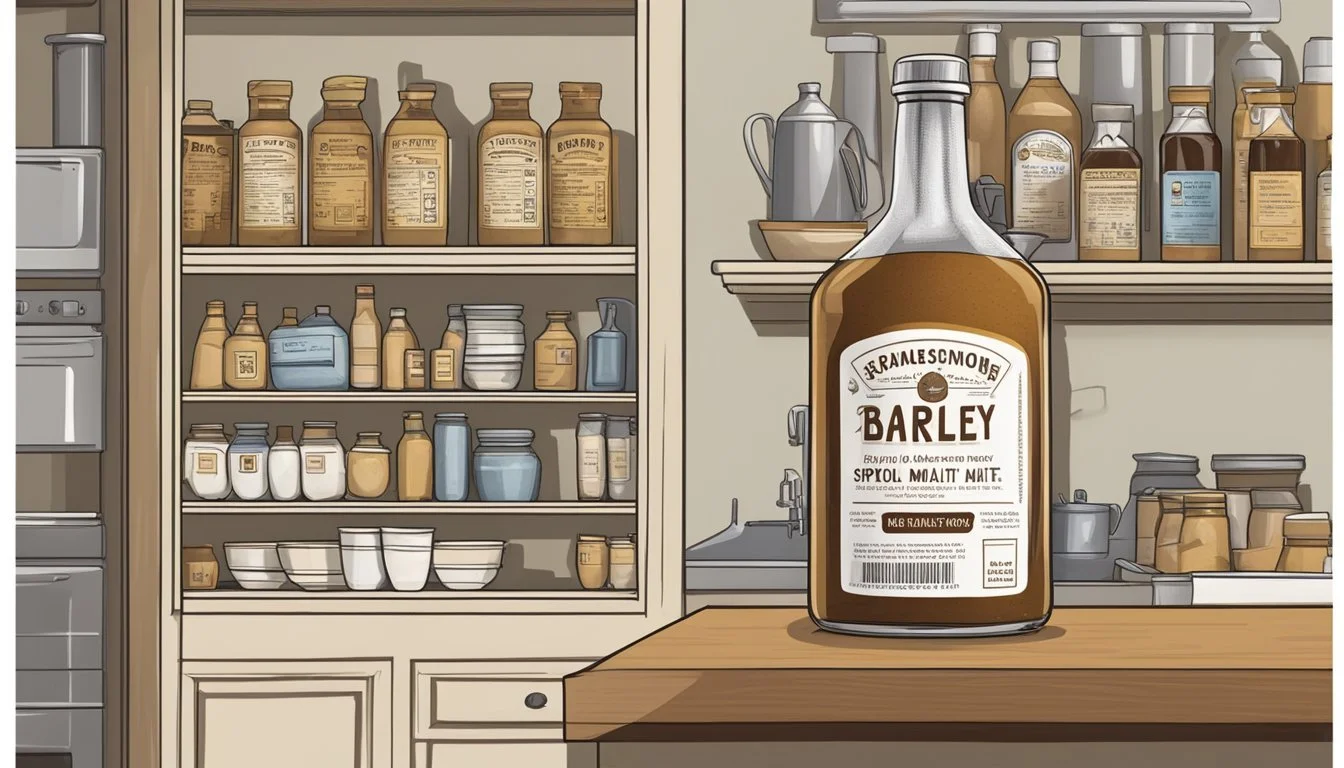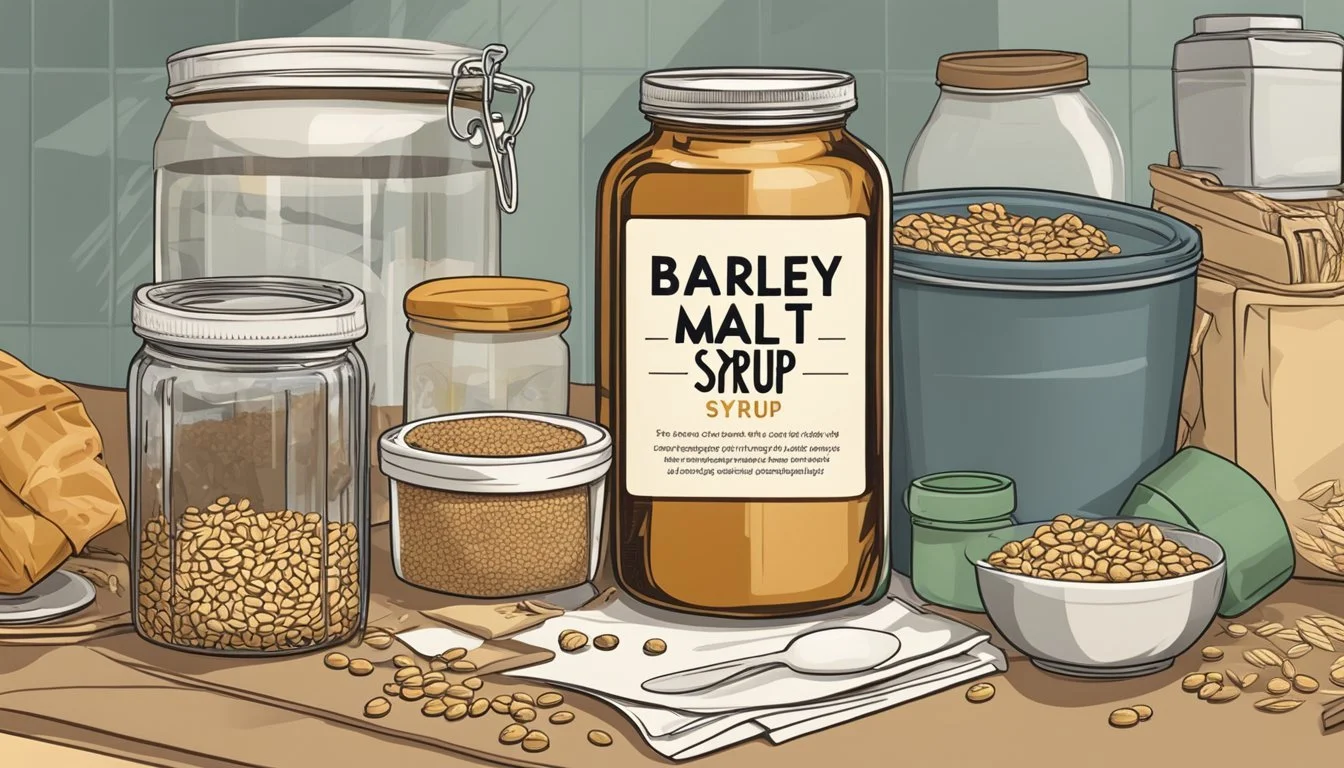Does Barley Malt Syrup Go Bad?
Shelf Life and Storage Tips
Barley malt syrup, a natural sweetener derived from malted barley, is a staple in many kitchens for its unique flavor and versatility. This unrefined sweetener is often employed in various culinary applications, particularly in baking and cooking, where its rich, dark color and distinctive taste add a special touch to recipes. Yes, barley malt syrup can go bad, especially when not stored properly.
Oxidation and exposure to humidity or sunlight can degrade the quality of barley malt syrup over time. This degradation can lead to changes in flavor and color, making it less desirable for cooking or baking. It's essential to store barley malt syrup in a cool, dark place and reseal it properly after each use to extend its shelf life.
Despite these considerations, barley malt syrup remains a beloved ingredient for its robust flavor profile and natural sweetness. Its applications stretch from sweetening beverages to enhancing the taste of baked goods, making it a versatile addition to many culinary practices.
Understanding Barley Malt Syrup
Barley malt syrup is a dark, viscous sweetener derived from sprouted barley grains. This unique syrup is known for its distinct flavor profile, nutritional content, and versatile culinary uses.
Composition and Production
Barley malt syrup is made through a process called malting. The barley grains are soaked in water to germinate or sprout. During germination, enzymes develop that convert the starches in the grain into sugars, predominantly maltose. After sprouting, the barley is dried to halt the process.
The sprouted grains are then mashed and mixed with water, allowing the enzymes to further break down the starches. The mixture is heated to extract the sugars, resulting in a thick, syrupy substance that is further concentrated. This process results in a sweetener with a rich, robust flavor and deep, dark color.
Nutritional Profile
Barley malt syrup contains various nutrients, including proteins, minerals, and vitamins. It is primarily composed of maltose, contributing to its distinctive sweetness. Despite being a carbohydrate-rich product, it offers trace amounts of B vitamins and minerals like potassium and magnesium.
While it provides some nutritional value, barley malt syrup has a high glycemic index, meaning it can cause a rapid spike in blood sugar levels. It's important for diabetics or those monitoring blood sugar to use it sparingly. Compared to refined white sugar, it is less sweet and less processed but should still be consumed in moderation.
Taste and Culinary Uses
The flavor of barley malt syrup is distinctive, offering a robust, malty taste with hints of caramel and honey. Its dark color and unique flavor make it a popular choice in various recipes, especially in baked goods like bread, bagels, cakes, and cookies. It’s often used in pancakes and waffles to provide a richer taste.
Because of its less intense sweetness compared to other sweeteners, it is ideal for recipes that benefit from its specific flavor profile. It is also used in the production of beer and malt extracts. When cooking, combining the syrup with water can help adjust its consistency for different culinary applications.
Proper Storage of Barley Malt Syrup
Storing barley malt syrup correctly is essential to maintain its quality and extend its shelf life. Attention to temperature, moisture, and container choice can help keep the syrup fresh and avoid spoilage.
Optimal Storage Conditions
Barley malt syrup should be stored in a cool, dark place to prevent heat and sunlight from degrading its quality. The ideal temperature for storage is typically around room temperature, but avoiding direct heat sources is critical. Excessive heat can cause the syrup to break down, while moisture exposure can lead to spoilage and mold growth. If the syrup is not going to be used frequently, refrigerating it can extend its shelf life. However, note that refrigeration may make the syrup thicker and harder to pour.
Container Recommendations
Using airtight containers is crucial for storing barley malt syrup. Once opened, transferring the syrup to a glass jar with a tight-sealing lid can help keep out oxygen, moisture, and contaminants. Ensure the container rim and lid are clean and dry before sealing to prevent any residue from inviting bacteria. Rubber or silicone seals on the lids provide an added layer of protection against leaks and outside elements. If stored properly, unopened containers can last up to two years, while opened containers should be monitored for any signs of spoilage, such as changes in color or odor.
Shelf Life and Spoilage Indicators
Barley malt syrup, like many natural sweeteners, has a specific shelf life, which can be influenced by storage conditions. Identifying spoilage in this syrup is usually straightforward through visual and sensory clues.
Visual and Sensory Clues
Barley malt syrup should appear thick and dark. A change in color, consistency, or flavor can indicate spoilage. Fresh syrup typically has a rich, dark brown color. Any lightening or unusual discoloration should be noted.
Consistency is another indicator. If the syrup becomes unusually runny or overly thick, it may be spoiled. The presence of mold or an off-putting odor can also indicate that the product has gone bad.
Expired syrup may not only lack sweetness but also develop a sour or strange taste. Regular checks for any changes can prevent the use of spoiled syrup.
Factors Affecting Shelf Life
The shelf life of barley malt syrup can be affected by several factors. Heat, air, light, and moisture are the primary culprits in reducing quality. Storing the syrup in a cool, dark place is essential. An unopened container can last up to two years, but once opened, it should be used within six months to ensure quality.
The type of container also plays a role. Glass containers are preferable for long-term storage as they prevent oxidation better than plastic. Ensuring the lid is tightly sealed will help keep bacteria and other contaminants at bay.
Avoiding direct sunlight and fluctuations in temperature can prolong the syrup's lifespan. Freezing the syrup can extend its shelf life to about two years, preventing spoilage and maintaining quality over time.
Culinary Applications and Substitutes
Barley malt syrup is known for its rich, earthy flavor and versatility in various culinary applications. Understanding how to use it in recipes and knowing its best substitutes can be essential for many kitchens.
Using Barley Malt Syrup in Recipes
Barley malt syrup can enhance the taste of baked goods, such as breads and muffins, by adding a distinctive sweetness and deep color. It can serve as a natural sweetener in both sweet and savory dishes.
In baking, it provides moisture and helps with browning, which is particularly useful in bread and pastry recipes. It's also used in making sauces and glazes, where its thick texture and fermentable sugars contribute to the dish's consistency and taste.
Brewers often use barley malt syrup due to its high sugar content and fermentability, making it a popular ingredient in homebrewing beer. Additionally, it can be added to beverages like teas and smoothies to introduce a unique flavor profile.
Substitutes and Alternatives
When barley malt syrup is unavailable, several substitutes can replicate its properties. One common alternative is honey, which offers a similar thickness and sweetness while being widely available.
Brown rice syrup and Korean rice syrup can also replace barley malt syrup, as they share similar consistencies and a mild, sweet flavor. These syrups work well in pancakes, bagels, and other baked goods.
Blackstrap molasses is another replacement due to its robust flavor and thick texture. It can substitute barley malt in recipes that call for intense taste, like breads and baked beans.
Other options include dark brown sugar mixed with water to achieve a syrupy consistency, which can be used in a 1:1 ratio for most recipes. For those requiring a dry alternative, dry malt extract (DME) can be used, particularly in brewing and some baking applications.
Barley Malt Syrup in Special Diets
Barley malt syrup can play a significant role in various dietary needs. Key considerations include its gluten content and potential health benefits and concerns for individuals with specific health goals.
Gluten Content and Consideration
Barley malt syrup is derived from barley grains, which contain gluten. This makes it unsuitable for gluten-free diets.
Individuals with celiac disease or gluten sensitivities must avoid barley malt syrup to prevent adverse reactions.
Despite its use in brewing beer and baking, its gluten content poses issues for those with dietary restrictions.
When considering alternative sweeteners, it is crucial for consumers to check labels for gluten-free certification to ensure safety.
Health Benefits and Concerns
Barley malt syrup offers certain nutrients such as B vitamins and trace minerals.
It has a lower glycemic index compared to some sweeteners, which may benefit blood sugar control.
However, it is less sweet than sugar, leading to potential over-consumption, which can negate its healthier profile.
While some appreciate its unique flavor and nutrient content, others must stay aware of the risks of excessive sugar intake.
Balancing its use within a diet, especially for those managing health conditions, is essential to reap any potential benefits without compromising health.
Alternatives and Substitutions
Barley malt syrup has several suitable substitutes. Each alternative has its unique characteristics, making it essential to choose the right one based on the recipe and desired flavor profile.
Molasses: Known for its intense flavor and dark color, molasses can effectively replace barley malt syrup. It works well in baked goods and sauces.
Honey: This thick, sweet liquid is a popular substitute. Honey provides a mild sweetness that can complement many recipes, from desserts to dressings.
Brown Rice Syrup: Gluten-free and vegan, brown rice syrup offers a mild, sweet flavor. It can be used in similar quantities as barley malt syrup.
Korean Rice Syrup: Made from barley malt powder and rice, it has a rich, earthy flavor. This syrup is common in Korean cuisine and serves as a good substitution.
Corn Syrup: Known for its neutral taste, corn syrup can replace barley malt syrup in recipes where sweetness is the primary requirement.
Maple Syrup: Offering a distinct, sweet flavor, maple syrup is a versatile substitute. It works especially well in baking and confections.
Substitute Usage Molasses Breads, baked beans; use ⅔ cup for every 1 cup barley malt syrup Honey Desserts, dressings; use in equal amounts Brown Rice Syrup Vegan, gluten-free options; similar quantities as barley malt syrup Korean Rice Syrup Korean recipes; provides rich, earthy flavor Corn Syrup Sweets, sauces; replace in equal quantities Maple Syrup Baking, confections; adjusts according to sweetness preference
These substitutes ensure that even without barley malt syrup, recipes maintain their desired texture and flavor.








